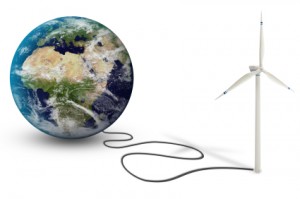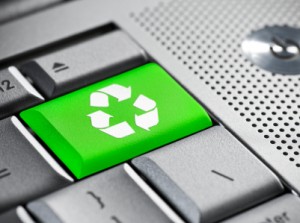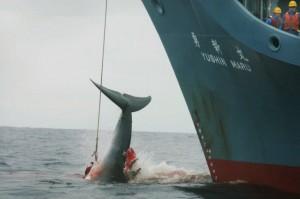Every year, just a short walk from CleanSpeak’s home in Portsmouth, New Hampshire, the Strawbery Banke historic museum puts on seasonal reenactments of life during different periods in American history. The most consistently interesting are the World War II era reenactments, when rationing and shortages ruled everyday life.
 Walk into the kitchen of the 1940’s home and the lady of the house might be making a cake with no flour or eggs, or an apple pie with no apples – yes, the old “mock apple pie” recipe from the back of the Ritz cracker box. During those years, in the kitchen and beyond, every time ingenuity met shortage, ingenuity won. Oleo margarine replaced butter because the military needed fat for explosives. Nylon replaced imported Asian silk in parachutes as it previously had in women’s stockings. A chicory concoction – a vile brew by the few firsthand accounts I’ve heard, but better than nothing – substituted for coffee.
Walk into the kitchen of the 1940’s home and the lady of the house might be making a cake with no flour or eggs, or an apple pie with no apples – yes, the old “mock apple pie” recipe from the back of the Ritz cracker box. During those years, in the kitchen and beyond, every time ingenuity met shortage, ingenuity won. Oleo margarine replaced butter because the military needed fat for explosives. Nylon replaced imported Asian silk in parachutes as it previously had in women’s stockings. A chicory concoction – a vile brew by the few firsthand accounts I’ve heard, but better than nothing – substituted for coffee.
So when China makes more noise about curtailing the flow of rare earths vital to the renewable energy industry, I can’t get too bunged up. We’ve been there before. We’ll figure it out.
This sanguine attitude runs counter to much of the prevailing wisdom in sustainability circles. China produces 95 percent of the world’s rare earth metals, and its plans to cut back exports have sent tremors through the sustainability community. Wind turbine and hybrid vehicle manufacturers need rare earths to produce ultra-efficient magnets and batteries. Magnets doped with rare earth metals called neodymium and dysprosium generate electricity more efficiently than conventional magnets, and are also smaller and lighter.
The problem with these wonder metals is that they’re so environmentally harmful to produce that it undercuts the sustainability quotient of every wind turbine with a rare earth magnet. “Rare earths” aren’t rare. They occur in much of the world, but they occur in such small concentrations that it takes extensive production processes to extract them from raw ore. None of these processes are what you might call tidy. The New York Times reported that the main rare earth-producing mine and refining area in China is surrounded by metallic-smelling air, strip-mined hills, acid-laden streams, and a reservoir overflowing with toxic, slightly radioactive sludge.
This is in the name of clean energy?
There has to be a better way, and ironically it might be China that helps find it. China claims it is curtailing rare earth exports because of production’s environmental toll. As a card-carrying cynic, I think it has a lot more to do with China wanting to use the metals itself to help corner the world market on wind turbines.
In either case, China’s decision is spurring research into rare earth alternatives. Hitachi has developed a hybrid engine that uses high-efficiency ferric oxide magnets instead of rare earth magnets. Toyota is also working on a non-rare-earth generator. U.K.-based Chorus Motors has produced a hybrid engine that substitutes innovative mechanics for rare earths. Disk drive manufacturers, another big rare earth consumer, are developing bigger and better flash drives that don’t need magnetic media. The nanomagnetism research group at Northeastern University in Boston is working on magnets that have the same strength as rare earth magnets with none of the toxicity. They’ve already succeeded in reducing the cost and environmental footprint of rare earth magnets, which bodes well for efforts to replace them altogether.
I don’t know if any of these are an equal substitute for rare earths, but it’s obvious we need one. Poisoning the earth and water to save the air just doesn’t add up. A pie made with real apples (and my Irish grandmother’s recipe) is still the gold standard, as rare earth magnets may always be. But if it will help the environment to take the bronze, serve me up some Ritz crackers soaked in cinnamon and lemon juice.





